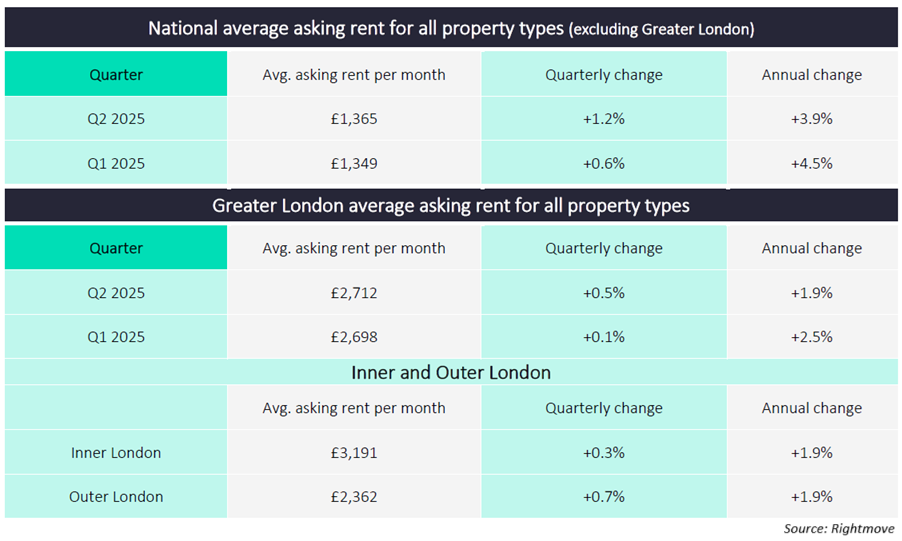Annual rent increases ease as supply and demand begin to rebalance

The average rent for newly listed properties outside London has reached £1,365 per calendar month, up 1.2% from the previous quarter, according to the latest figures from property platform Rightmove. This marks a new record, although annual growth has slowed to 3.9% — the lowest rate since 2020.
In London, average advertised rents rose by 0.5% to £2,712 per month, setting a record for the 15th consecutive quarter. Since the onset of the pandemic five years ago, new tenants are now paying £417 more each month than in 2020, a 44% increase. This rise has outpaced average earnings, which have grown by 36% over the same period.

Much of the increase in rents occurred during the pandemic years of 2021 and 2022. Since 2023, the annual rate of rent growth has gradually slowed. The moderation in rent increases has been attributed to an improved balance between supply and demand in the rental market. The number of available rental properties is now 15% higher than a year ago, with the North East seeing the largest increase at 33%. However, supply remains 29% below 2019 levels.
Tenant demand has eased by 10% compared to last year. As a result, the average number of enquiries per rental property has fallen to 11, down from 16 last year but still higher than the seven recorded in 2019.
Recent data from UK Finance indicates an increase in buy-to-let lending, with the total number of loans for rental properties up 17% so far this year compared to the same period in 2023. This includes both new purchases and remortgages, with new buy-to-let purchases rising by 28%.
The market’s slower pace has also led to longer letting times and more frequent price reductions. On average, it now takes 25 days for a property to be marked as let agreed on Rightmove, compared to 21 days last year and 18 days during the pandemic peak in 2022. Nearly a quarter (24%) of rental listings have seen price reductions, the highest proportion since 2017.
“Many landlords within the private rental market are grappling with substantial hikes in their overall costs, including increased taxes, unfavourable mortgage rates, and ongoing regulatory challenges,” said Megan Eighteen, president at industry body ARLA Propertymark. “These factors are making property investment less appealing and potentially riskier. Consequently, this is exacerbating the disparity between supply and demand for housing, and we've seen a significant impact on rental prices, which vary regionally.”
Rental growth directly influences investor behaviour, borrowing capacity, and the overall appeal of property investment — all factors that drive demand for mortgage broker services. Brokers who closely monitor rental growth trends are better positioned to advise clients, expand their business, and offer more strategic guidance in a changing market.
“Despite another new record in average asking rents for tenants, the big picture is that yearly rent increases continue to slow, which is good news for tenants,” said Colleen Babcock, property expert at Rightmove. “Supply and demand is slowly rebalancing towards more normal levels, though we still have a way to go before we reach pre-2020 levels of available homes for tenants.
“The good news is that the latest industry snapshot suggests more investors are taking out buy-to-let loans compared with last year, which should help to bring even more homes to the rental market.”
Want to be regularly updated with mortgage news and features? Get exclusive interviews, breaking news, and industry events in your inbox – subscribe to our FREE daily newsletter. You can also follow us on Facebook, X (formerly Twitter), and LinkedIn.



